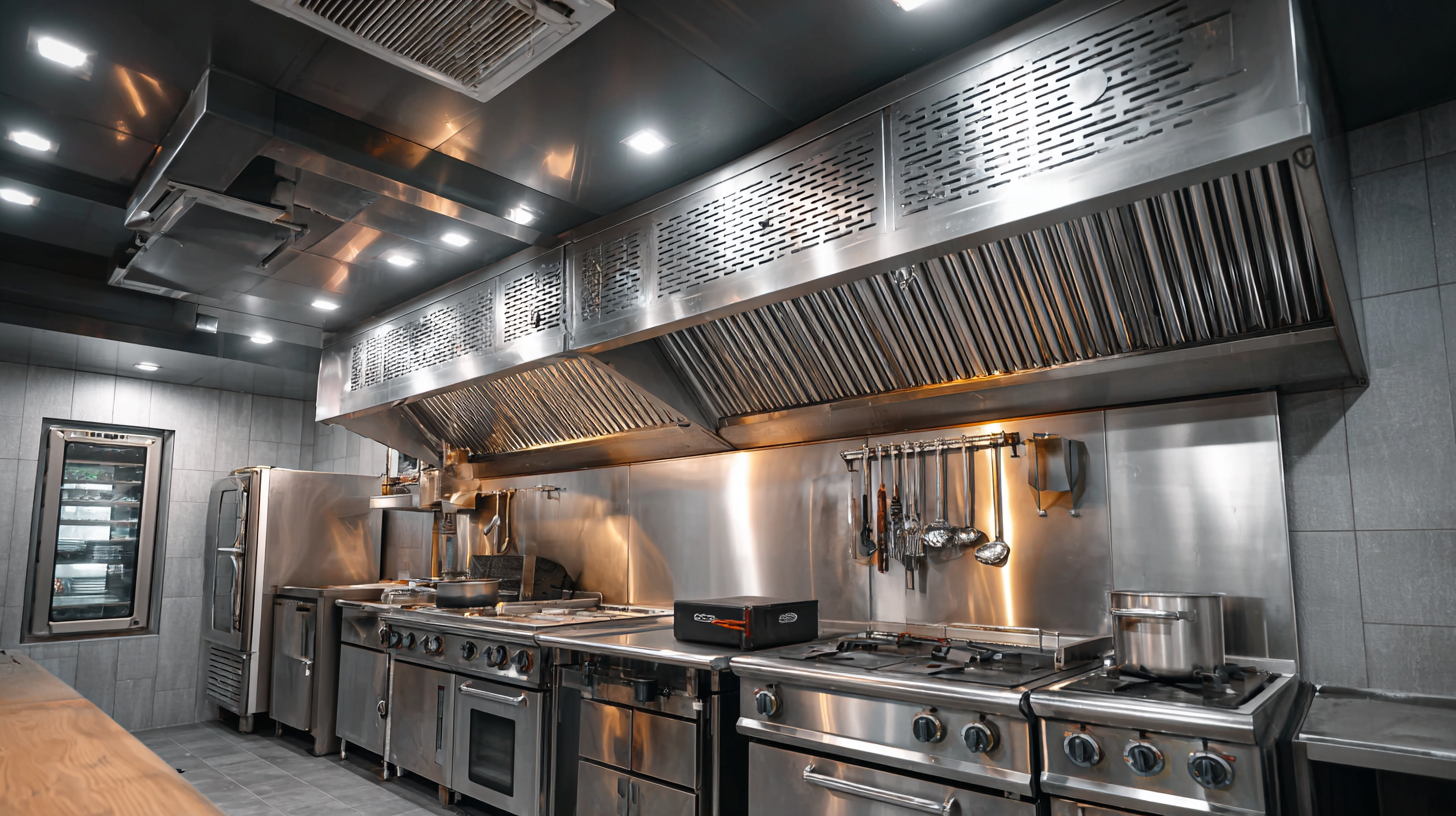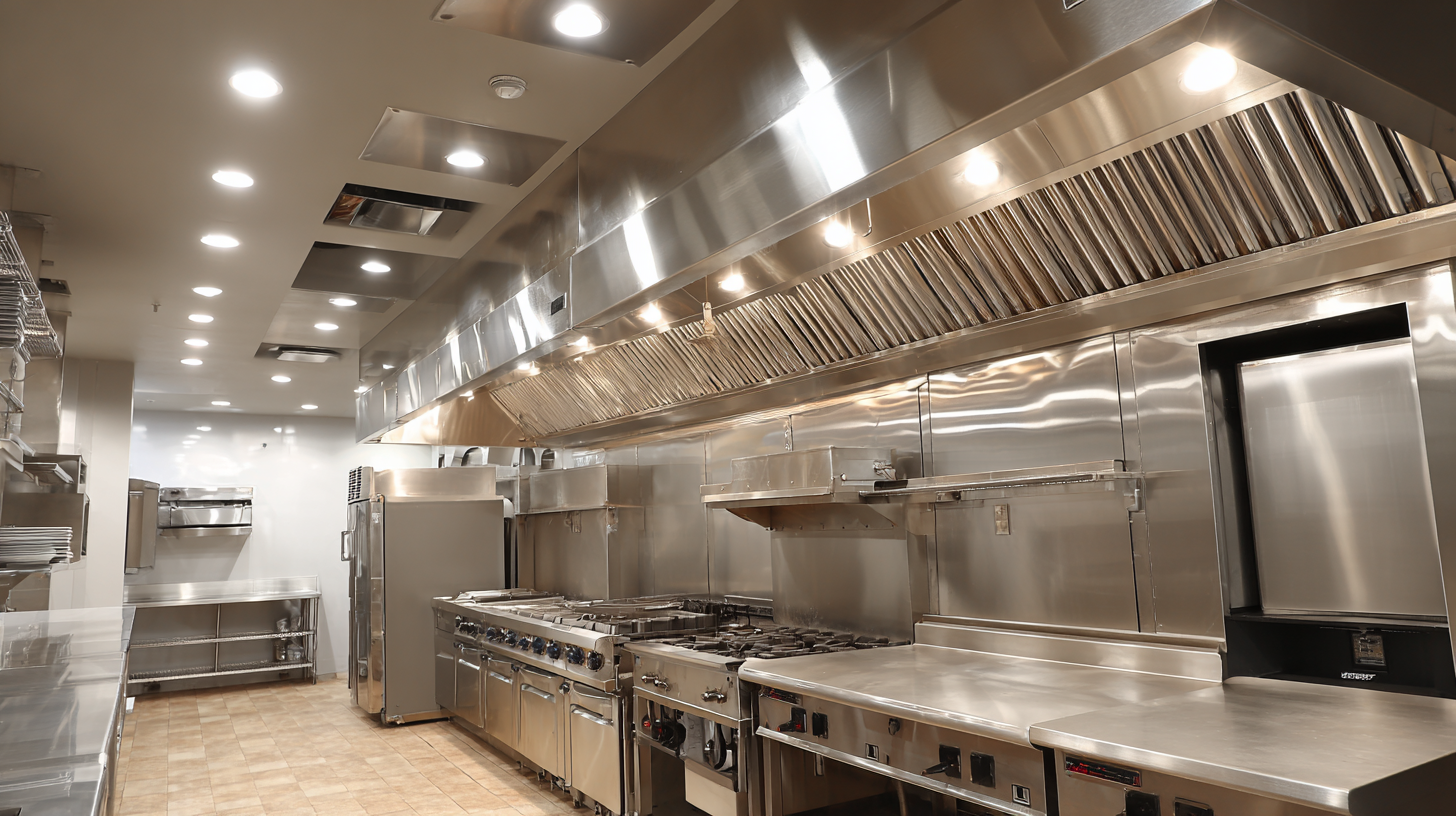Quality first, innovative service
Leave Your Message
-
Phone
-
E-mail
-
Whatsapp
-
Whatsapp

-
Wechat17786531544
-
Wechat

Quality first, innovative service


When it comes to running a successful restaurant, one of the essential components to consider is the Commercial Kitchen Hood. This crucial equipment not only plays a pivotal role in maintaining air quality and ensuring safety but also influences the overall efficiency of your kitchen operations. Choosing the right Commercial Kitchen Hood can be a daunting task, given the myriad of options available, each designed to meet specific cooking needs, space constraints, and regulatory requirements. In this ultimate guide, we will explore the various types of Commercial Kitchen Hoods, their features, and factors to consider during selection, ensuring you make an informed decision that aligns with your restaurant's unique demands. By understanding the nuances of Commercial Kitchen Hoods, you can enhance your kitchen's performance and provide a safe, comfortable environment for your staff and patrons alike.

When selecting a commercial kitchen hood for your restaurant, it’s essential to consider several key factors that impact both functionality and compliance with safety regulations. First and foremost, the hood's size must match the cooking equipment it will serve. A properly sized hood ensures efficient ventilation by capturing smoke, steam, and odors effectively. Measure the dimensions of your cooking appliances to determine the necessary width and depth of the hood, factoring in any clearance requirements dictated by local health codes.
Another critical aspect is the type of hood that best suits your cooking methods. For instance, a type I hood is required for kitchens that use solid fuels or produce grease-laden vapors, whereas a type II hood may suffice for other cooking methods that do not produce such emissions. Additionally, consider the materials used in the hood’s construction, as stainless steel is often favored for its durability and ease of cleaning. Finally, ensure the hood is equipped with adequate lighting and fire suppression systems, which are crucial for maintaining a safe kitchen environment.
| Feature | Importance | Considerations |
|---|---|---|
| Size and Configuration | High | Must match kitchen layout and cooking equipment |
| Ventilation Type | High | Choose between ducted and ductless options |
| Filtration System | Medium | Evaluate grease filters and other filtration needs |
| Noise Level | Medium | Consider noise regulations and staff comfort |
| Maintenance Requirements | High | Understand cleaning frequency and costs |
| Energy Efficiency | Medium | Look for energy-efficient models to reduce costs |
| Regulatory Compliance | High | Ensure compliance with local health and safety standards |
When selecting a commercial kitchen hood for your restaurant, understanding the different types available is crucial to meeting your specific needs. The most common types include wall-mounted hoods, island hoods, and under-cabinet hoods.
 Wall-mounted hoods are ideal for kitchens that have cooking equipment positioned against a wall. They provide excellent ventilation and are easy to install, making them a popular choice for standard layouts.
Wall-mounted hoods are ideal for kitchens that have cooking equipment positioned against a wall. They provide excellent ventilation and are easy to install, making them a popular choice for standard layouts.
Island hoods, on the other hand, are perfect for open kitchen designs where cooking stations are placed in the center of the room. These hoods not only enhance airflow but also serve as a focal point, adding style to your kitchen space. Finally, under-cabinet hoods are compact and fit beneath cabinets, offering a discreet solution for smaller kitchens while still effectively removing smoke and odors. By evaluating the layout of your kitchen and the cooking methods you employ, you can choose the hood that best aligns with your operational needs and aesthetic preferences.
Proper ventilation is crucial in restaurant kitchens, not just for compliance with health codes, but for maintaining a safe and efficient working environment. According to the Food and Drug Administration (FDA), improper ventilation can lead to an accumulation of harmful airborne contaminants, which may pose significant health risks to staff and patrons. In fact, studies have shown that kitchens without proper ventilation can experience a 20-30% increase in potential health hazards, including exposure to smoke, oil, and other particulate matter.
The benefits of effective ventilation extend beyond health safety; they also impact kitchen efficiency and overall restaurant performance. A report by the National Fire Protection Association (NFPA) indicates that nearly half of all commercial kitchen fires are caused by grease buildup due to inadequate ventilation systems. Installing the right commercial kitchen hood not only reduces the risk of fire but can also improve air quality and operational efficiency. In a well-ventilated kitchen, employees tend to have better morale and productivity, which can directly influence the quality of service and the dining experience offered to customers. Proper ventilation is not merely an option but a necessity that affects both safety and profitability in the restaurant industry.
When selecting the right commercial kitchen hood, understanding local regulatory compliance is crucial for restaurant owners. Most local jurisdictions adhere to standards set by organizations like the National Fire Protection Association (NFPA) and the International Mechanical Code (IMC). For instance, NFPA 96 outlines guidelines for the installation of kitchen ventilation systems, emphasizing the importance of fire safety and exhaust systems. According to industry reports, approximately 50% of all fire incidents in commercial kitchens are related to poor ventilation or hood systems that do not meet local codes, which can lead to significant financial loss and safety hazards.
Additionally, restaurants must be mindful of local health regulations that dictate ventilation requirements based on the type of cooking performed. For instance, high-heat applications, such as frying or grilling, often require more stringent exhaust capacities. The U.S. Environmental Protection Agency (EPA) specifies guidelines to mitigate smoke and other pollutants emitted from kitchen operations, making compliance essential not only for legal safety but also for community health. Neglecting these regulations could result in fines, shutdowns, or even lawsuits, underlining the importance of investing in a hood system that meets or exceeds local compliance standards.
This chart displays the compliance levels of commercial kitchen hoods across various cities. Understanding local regulatory requirements is crucial for restaurant owners to ensure safety and compliance.
Proper maintenance of your commercial kitchen hood is essential not just for compliance but also for ensuring the safety and efficiency of your restaurant's operations. According to the National Fire Protection Association (NFPA), kitchen ventilation systems can accumulate an average of 30-50 pounds of grease annually, creating significant fire hazards. Regular cleaning, ideally every three months, is crucial to reducing this risk and enhancing air quality. Utilizing a certified professional service can ensure that your hood and ductwork are thoroughly cleaned and inspected.
In addition to regular cleaning, changing the filters of your kitchen hood regularly helps maintain optimal performance. The Food and Drug Administration (FDA) suggests that grease filters should be cleaned weekly or replaced every 1-3 months, depending on usage levels. Neglecting this maintenance can lead to inefficient airflow, which can increase energy costs by as much as 25%. By establishing a routine maintenance schedule and adhering to industry guidelines, restaurant owners can safeguard their facilities while optimizing energy consumption and prolonging the lifespan of their equipment.

